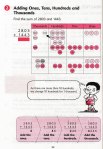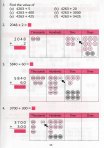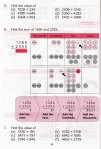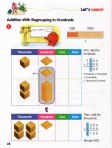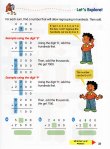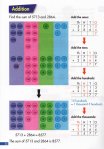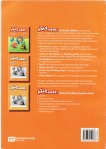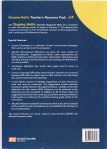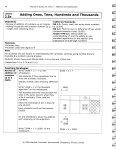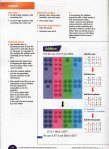In Part 1 and 2, I shared examples from the Teacher’s Guides and Textbooks from four sets of materials used in Singapore and the United States. The materials are all from the third grade level:
- Primary Mathematics U.S. Edition (2003) from SingaporeMath.com
- Primary Mathematics Standards Edition (2008) from SingaporeMath.com
- My Pals Are Here Maths (2007) obtained in Singapore from Marshall Cavendish
- Shaping Maths (2007) obtained in Singapore from Marshall Cavendish
Following are the practice pages from each workbook that correspond with the lesson on addition within 10,000 that introduces regrouping in the hundreds. As before, each thumbnail links to a full-sized file. Once again, there are minimal differences between the U.S. and Standards editions of Primary Mathematics. Problem #1 changes pictures from towels hanging on a clothesline to boats. Problem #2 has one small change. The equation for letter B changes from 4107 + 5 to 4105 + 5. Finally, on problem #4, “Weihua” becomes “Will” U.S. Edition Workbook 3A: 

 Standards Edition Workbook 3A:
Standards Edition Workbook 3A: 

 The My Pals Are Here Workbook is perforated and 3 hole punched. Perforated pages would be a great change to make to the Primary Mathematics workbooks! Neither My Pals Are Here nor Shaping Maths have any word problems tied to this practice lesson, in fact, there are very few word problems in the books at all. My Pals Are Here Workbook 3A Part 1:
The My Pals Are Here Workbook is perforated and 3 hole punched. Perforated pages would be a great change to make to the Primary Mathematics workbooks! Neither My Pals Are Here nor Shaping Maths have any word problems tied to this practice lesson, in fact, there are very few word problems in the books at all. My Pals Are Here Workbook 3A Part 1: 
 Shaping Maths Activity Book 3A part 1:
Shaping Maths Activity Book 3A part 1: 
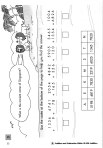 Were you expecting less practice in the materials from Singapore?
Were you expecting less practice in the materials from Singapore?

